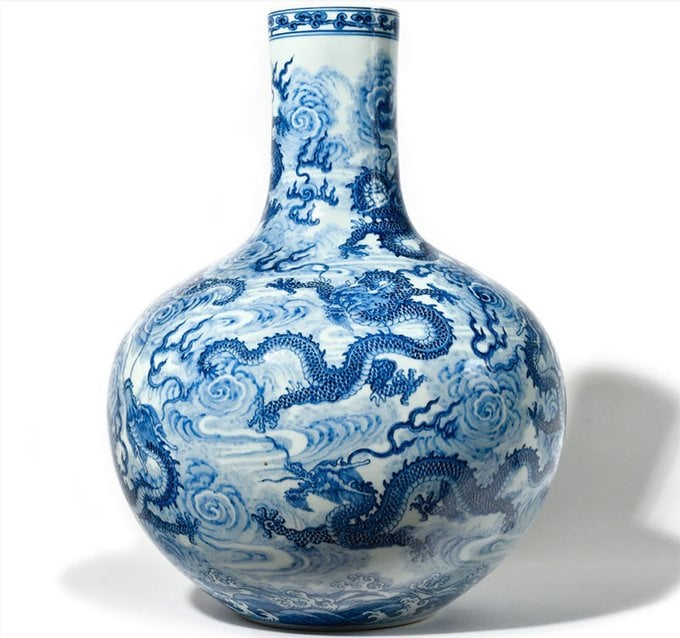
The Osenat auction house employee responsible for pricing a blue-and-white dragon vase at $1,900, and then watching it sell for $7.5 million—more than 4,000 times the original estimate—has been fired from the French auction house for failing to properly identify the value of the work.
The expert, who remains unidentified, “made a mistake,” auction house president Jean-Pierre Osenat told the Guardian. “One person alone against 300 interested Chinese buyers cannot be right,” he said.
The work, which came from an anonymous seller going through her late mother’s estate in Brittany, was made in the Tianqiuping (“heavenly globe”) style, its blue and white floral pattern an instantly recognizable motif of that period, which in addition to its dragon and cloud illustrations, also may contain a stamp of Qianlong, the fifth emperor of the Qing dynasty, the Guardian reported.
The vase being auctioned. Courtesy of Osenat.
The celestial sphere vase, sold on October 4, contains a round base and long neck, and was described in the catalogue as a “large tianqiuping porcelain and polychrome enamel vase in a blue-white style with globular body and long cylindrical neck, decorated with nine fierce dragons and clouds (mark under the base)”. It was noted as being in “good condition.”
The auction house also hinted that, prior to the sale, the pre-auction exhibition was overloaded with 300 to 400 interested buyers, unprecedented for a sale in which no other objects were valued at more than $8,000.
“We don’t know whether [the vase] is old or not or why it sold for such a price,” added Cédric Laborde, director of the auction house’s Asian arts department. “The valuation corresponded to what the expert thought. In China, copying something, like an 18th-century vase, is also an art.”
According to the Guardian, the auction house specialist responsible for the blunder has stood by their decision to offer it with a pre-sale estimate of €1,500 and €2,000 ($1,457–$1,943).
“The expert thought it was a 20th-century copy, a decoration, so we didn’t change the estimation. In the end, the market decided it was 18th century,” Osenat told the Guardian. “I have confidence in the market. One expert said what he said … but the real price is what the buyers decide.”
Artnet News reached out to Osenat Auctions for comment but did not hear back since press time.
More Trending Stories:
Jameson Green Won’t Apologize for His Confrontational Paintings. Collectors Love Him for It